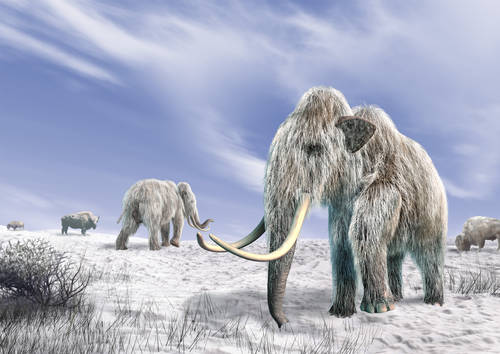Male mammoths were more prone to falling into natural death traps

When researchers sequenced DNA from nearly a hundred woolly mammoth specimens using genomics service of SciLifeLab, they discovered that the majority of samples came from males. The explanation could be the risky behavior of male mammoths.
A novel study led by Love Dalén from the Swedish Museum of Natural History has uncovered that out of every ten fossilized mammoth specimens analyzed, seven come from males. A total number of 98 specimens were collected from various parts of Siberia and sequenced by the SciLifeLab National Genomics Infrastructure (NGI). The project also gained from training via the Swedish Bioinformatics Advisory Programme, organised by NBIS.
As most bones, tusks and teeth from Ice Age animals have not been preserved in nature, the researchers suggest that remains that can be found today was buried and therefore protected. They also propose that the the skewed sex ratio of the gathered mammoth samples can be explained by the behavior of inexperienced male mammoths that more often travelled alone and got themselves killed by falling into natural traps. This would have made their preservation more likely, compared to female mammoths.
The results are published in Current Biology.
Read more about this research in the latest issue of Synergy magazine (available in Swedish and English).




